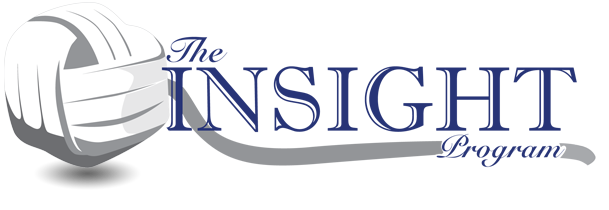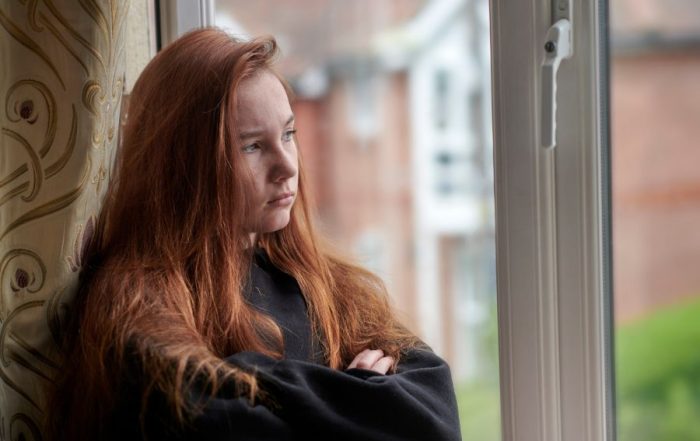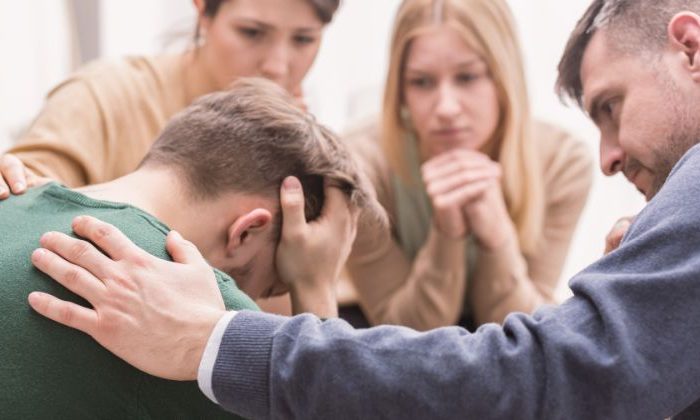Dr. Steven L. Jaffe: Looking Back on 40 Years of Adolescent Substance Abuse Treatment
Steven L. Jaffe, MD, DFAPA, DLFAACAP
Professor Emeritus of Child and Adolescent Psychiatry, Emory University School of Medicine, Atlanta, GA
Clinical Professor of Psychiatry, Morehouse School of Medicine, Atlanta, GA
Clinical Director, The Insight Adolescent Drug Abuse Program
In 1972, while I was a fellow in child psychiatry at Emory University, I consulted at a methadone program where heroin addiction and crack cocaine were an inner city African-American problem. In the mid-1980s, I became involved in substance abuse treatment as the director of an Atlanta adolescent inpatient program. Half of my patients were involved in alcohol and drugs, and, at the time, I knew next to nothing about how to deal with this problem. My residency at the Massachusetts Mental Health Center (Harvard University) and my child and adolescent psychiatry fellowship at Emory University had done little to prepare me for work in this new field.
I decided to create a separate drug program for adolescents, hired an excellent counselor who was in good recovery, and we plunged ahead. Together we ran a substance-abuse group five days a week for four years. Today, based on that experience, I advise fellows in child psychiatry at Emory University School of Medicine to pick a sub-specialty that few know anything about; one can become an expert if you know just a little bit and build upon it.
In the 1980s, the main drugs abused by teenagers were alcohol, marijuana, LSD, crack and cocaine. My counselor took me to my first AA meeting, and we began to bring the adolescents in the program to meetings every week. I studied the history of AA, and as we were trying to apply the steps to teens, I wrote “The Step Workbook for Adolescent Chemical Dependency Recovery: a Guide to the First Five Steps.” This workbook modified the steps to make them developmentally appropriate for adolescents. At that time, the AACAP had a contract with APPI Press to publish recommended books. I submitted the workbook for review by the AACAP committee. Although two members of the committee approved it, two others declined. They thought that the AA steps, which were written in the late 1930s, were too religiously oriented and sexist (“God as we understand Him”). Fortunately for me, Mel Lewis, chair of the committee, cast the deciding vote to publish. Since it was published in 1990, 35,000 workbooks have been sold.
I learned about addiction on a personal level during the early 1980’s as I struggled to stop smoking. Nicorette gum was very helpful, and I have not had a cigarette in over 35 years. Still, I continue to have using thoughts and urges which demonstrates the power of the addictive process and believe that my understanding of addiction is confirmed by my own experience.
I regret to say that during that time period, people in the addiction field, including me, took a confrontational approach which we rationalized was necessary to break thru denial. While I never yelled at someone that he was an addict, I did take an aggressive position asking questions to have him/her admit how drugs and alcohol had negatively affected their life.
At the time I was directing daily community meetings for a hospital psychiatric program with 30 adolescents and staff. It was during that period that I was elected to be chairman of the Academy’s nominating committee. When I assertively chaired a meeting to choose a slate of national officers, one member supportively remarked “Oh, Jaffe was just acting like he was running his adolescent community meeting.” I directed that hospital program for 10 years with close to a 95% census and a relationship with Emory University School of Medicine in which we sponsored two residents/fellows every year.Shortly thereafter, there was a shake-up in the administration, and I was fired, and a few years later, the hospital closed.
I went on to direct another adolescent program in Atlanta, but that position was short-lived as the hospital was sold to an investor who wanted an immediate financial return and decided to cut staff. Then, in 1992, I went to a third hospital to direct their adolescent psychiatric program, and I again set up a separate substance abuse program. Since hospital length of stays were now a few weeks instead of a few months, I developed “the Adolescent Substance Abuse Intervention Workbook: Taking a First Step” which was also published by APPI Press.It solicits answers to short concrete questions as to the negative effects of alcohol/ drugs on 12 areas of an adolescent user’s life. The answers are presented and further explored in group therapy. This process corresponds to the First Step of AA and helps subjects move from precontemplation to contemplation. Unlike books on psychopharmacology, which quickly become out of date, these workbooks are still being used in a number of adolescent treatment programs.
After 10 years at this hospital, with length of stays now reduced to only a few days I was burnt out and left hospital psychiatry. I have continued teach at Emory and Morehouse medical schools along with the private practice I had started in the 1970s.
In 1998 I was fortunate to connect with a creative enthusiastic sobriety intensive outpatient adolescent/young adult substance-abuse program known as the Insight Program. A few years later I became their clinical director, and I continue in that position at the present time. This is a unique program of having fun without drugs and alcohol and consists of groups four hours a day, Monday to Friday, two evening groups where IOP patients connect with those in the aftercare program, and a weekly parents’ group. The uniqueness of the program lies in its provision of social activities every Friday night and Saturday night. The IOP lasts 12-15 weeks and aftercare, where the adolescents attend evening groups and the weekend social activities, continues for two years. Here I learned the importance of a loving empathic approach. The staff are cool, hip, young recovering drug addicts who clearly love what they do. They pay me a token amount, but my primary compensation is the love and good feelings of working with them.
While working in this modified 12-Step program, I became interested in understanding the spiritual (higher power) component. During the past several I years I have been interviewing young staff who are in good recovery, have completed the program and were training in the program’s counselor 12-week training program. After interviewing 72 young staff members, I compiled their stories, realizations and epiphanies in my recent book “Sacred Connections: Studies of Spirituality in Recovering Adolescent and Young Adult Substance Abusers” (available from Amazon books). Like the AA booklet “Came to Believe…,” which describes the variety of spiritual experiences in adult alcoholics working a 12-Step program, this book describes the spiritual struggles faced by substance abusing adolescents and young adults trying to seek a higher power. It is a tool for any program that uses or connects severe substance abusing youth to a 12-Step program.
Drugs of choice in the 1990’s were alcohol and marijuana, but Ecstasy, Molly, Ritalin, and Adderall were added to the mix. The methamphetamine epidemic began in the late 1990s and continued in the 2000s. Then, during the 2000s, the perils of substance use became more severe as opiate and benzodiazepine pills became popular. Beginning in 2005, physical dependence to opiate pills was widespread and led into the present epidemic of heroin addiction in suburban middle- and upper-class Caucasian populations.
Marijuana strength has increased tenfold, increasing its negative effects on cognition, anxiety and danger to driving. In addition, LSD and the use of research chemicals, including the synthetic cannabinoid Spice, is common. While in previous decades death in adolescents and young adults attributed to drug use was uncommon, in the current opiate epidemic, in which fentanyl is added to heroin, death due to overdose is no longer a rare phenomenon. For physicians and counselors, the stress of dealing with these patients has soared, as treatment becomes a daily life-and-death issue.
The high prevalence of drugs in the adolescent and young adult population makes it imperative for all child psychiatrists to become knowledgeable about substance abuse. I was delighted to see that at the recent AACAP meeting in Seattle, there were several presentations and an Institute on substance abuse and medical marijuana. Still, there has been a relative paucity of child and adolescent psychiatrists entering this field of treatment. In addition there are relatively few quality treatment programs for adolescents. Sending a teen to an expensive 30-day program without integrated intensive local follow-up treatment yields little success.
Child and adolescent fellowships need to provide more substance abuse treatment experience. I am especially pleased that Morehouse Medical School, which will begin a child and adolescent psychiatry fellowship in 2020, will have fellows spend two days a week for three months at the Enthusiastic Sobriety Program that I direct. Working with severe substance abusing youth challenges the psychiatrist with unique issues. Young abusers love their drugs, frequently relapse and are poorly motivated to change, making treatment especially difficult. Treatment of dual disorders is hard to accomplish unless sobriety is achieved. Connection to a recovery community is extremely difficult to establish unless one networks and works with existing programs. In spite of these barriers, if one can handle the roller-coaster progress involved, each case of a successfully treated teen/young adult becomes especially gratifying as a life is saved.







